|
One
of the most important choices you make as a 4x4 owner is your
tires. This page will give you information on the different tires
available, as well as specifications and side by side comparisons. There's
also links to check prices, reviews, and links to the manufacturers.
Hopefully,
this page will better inform you of the tires available.
Looking
for a 35-Inch Mud Terrain? Click HERE.
Tread
Designs:
Light
truck tires come in basically (3) designs:
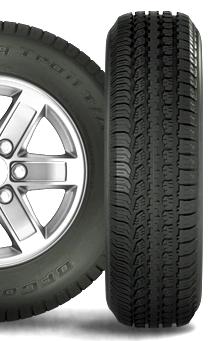
All Season Tire |
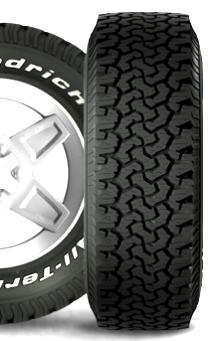
All Terrain Tire |

Mud Terrain Tire |
All
Season - The all season tire belongs on cars and 2wd trucks. They're
pretty much a passenger car tire with no off road capability. Keep
walking past those to the better tires.
All
Terrain - Every 4x4 truck or SUV should come with all terrain
tires. An all terrain tire is built with off-road standards, but designed
more for street performance. They'll typically give you slightly better MPG
than a mud terrain, and don't create the noise associated with some mud
tires. They're best suited for snow, and mild off-road conditions such as
dirt roads and mild trails.
Mud
Terrain - If you ever plan to take your truck off-road, this is
the tire you want. In fact, it doesn't even need to be a true off-road
vehicle. Some people use them for traction on the trucks they tow their
off-road vehicles with (because you usually end up having to park it in a
field somewhere), or on farm vehicles that need to drive in to fields. The
aggressive tread and deep voids allow them to get a good bite without
clogging up with mud.
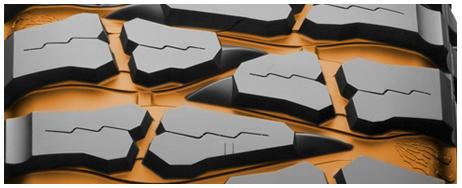
(The
colored area shows the void in this mud terrain)
In
addition, there are some competition and rock crawling specific tires, but
we're not going to get in to that. If you're in to competition rock
crawling, then you're likely not reading this.
Construction
Designs:
Besides
choosing the type of tread design, there is also Radial and Bias ply
tires.

Bias
Construction Tire |
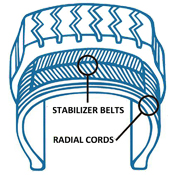
Radial
Construction Tire
|
Bias
Ply - Although they're not as plentiful as they
use to be, there are still several bias ply off-road tires out there. Bias
tires typically have the ply cords that extend diagonally from
bead to bead at a range of 30 to 40 degree angles. Each successive
ply is laid at an opposing angle, forming a criss-cross pattern.
This design allows the entire tire body to
flex, as the tread and sidewalls share the same casing plies. The
flex allows for better gripping, better clean out, and conformity
to rough and rocky terrain. Bias type tires are best suited for
extreme off-road conditions where grip, cleanout, and traction are
top priority. These tires are just as strong in the sidewalls as
in the center of the tread. While they may not flex as readily as a
radial, the flex in the tread makes up for it.
Bias tires tend to
wear out quicker and form flat spots compared to their
counterparts. The flexing also means increased rolling resistance,
a noisy tire, and less control and traction at higher speeds. A set of bias ply off-road tires
will usually only last 20,000 - 30,000 miles when used
on the highway.
Radial
- Radial
constructed tires utilize ply cords that extend from bead to bead
at approximately right angles to the centerline of the tire. They
are parallel to each other, and are combined with stabilizer
belts. They have good directional stability offering a smooth ride,
and tend to last for more miles than a bias tire.
Their
drawbacks are weaker sidewalls, and the steel belts hamper the radials
ability to conform to trail obstacles.
Evolving
Technology:
While
bias tires have been considered to have a stronger sidewall than a radial
tire, manufactures have been working to improve the sidewall strength of
their off-road tires.
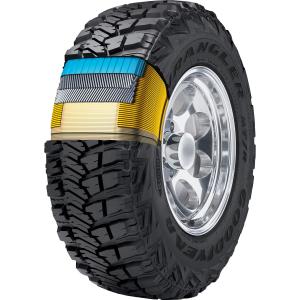
Goodyear
Wrangler MT/R with Kevlar
Goodyear
offers their Wrangler MT/R with a Kevlar reinforced sidewall, and they
claim it helps increase sidewall puncture resistance by 35%. Some
manufacturers also list their off-road tires with a 3-ply sidewall, and
claim that it makes them more puncture resistant.
What's
Available:
Below
is
a chart showing the different 33-inch mud terrains available. The chart
includes:
-
Tire
dimensions / specifications
-
Side
by side comparisons
-
Price
ranges
-
Links
for checking prices
-
Reviews
& ratings
-
Links
to the manufactures page for the tire listed
You'll
notice that most of these tires are not a true 33-inch tire. You'll also see
that some have a deeper tread measurement than others. Recommendations
follow the chart.
| 33"
Mud Terrains
|

|
|
BFGoodrich Mud Terrain KM2
|
|
33x12.50x15 |
|
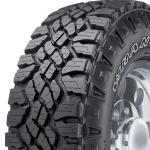
|
|
Goodyear
Wrangler Duratrac
|
33x12.50x15
|
|
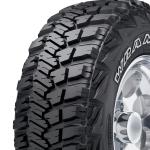
|
Goodyear
Wrangler MTR
|
33x12.50x15
|
|
|
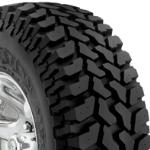
|
|
Firestone
Destination MT |
|
33x12.50x15 |
|
|
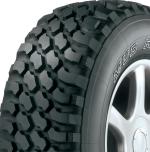
|
|
Dunlop
Mud Rover
|
|
33x12.50x15
|
|
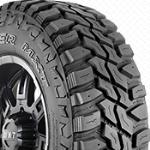 |
| Mastercraft Courser MXT |
| 33x12.50x15 |
|
|
Construction |
Radial |
Radial |
Radial |
Radial |
Radial |
Radial |
|
Overall
Diameter (in) |
32.8 |
32.8 |
32.8 |
33 |
32.5 |
32.83 |
|
Overall
Width (in) |
12.5 |
12.5 |
12.5 |
12.5 |
12.5 |
12.1 |
|
Tread
Width |
N/A |
N/A |
N/A |
9.9 |
9.6 |
9.8 |
| Approved Rim Width
(in) |
8.5 -
11.0 |
8.5 - 11.0 |
8.5 - 11.0 |
8.5 - 11 |
8.5 -
11.0 |
8.5 -
11.0 |
|
Tread
Depth (_/32nds) |
20 |
18 |
21 |
22 |
20 |
20 |
|
Tire
Weight (lbs) |
59.5 |
N/A |
N/A |
60 |
53 |
N/A |
|
Warranty |
Life of
tread or 6-Years |
50,000 Miles |
60,000 Miles |
5-Years /
Free
replacement first 3 years, then prorated until 2/32" |
6 Years /
Free replacement first year or 2/32" of wear, then prorated
until 2/32" |
Undefined |
|
Price Range (03/2014) |
$210-$240
|
$162 -
$195 |
$205 -
$220 |
$213 -
$255 |
$172 -
$180 |
$170 -
$175 |
|
Price
- Online Dealer |
TireRack.com
|
TireRack.com |
TireRack.com |
TireRack.com |
TireRack.com |
Onlinetires.com |
|
Rating - Online Dealer |

|

|

|

|

|
N/A |
| Price - Amazon |
Check Price
|
Check Price
|
Check Price
|
Check Price
|
N/A |
N/A |
| Reviews - Amazon |
Read
Reviews |
Read
Reviews |
N/A |
N/A |
N/A |
N/A |
|
Rating
- Amazon |

|

|
N/A |
N/A |
N/A |
N/A |
|
Price - 4Wheelparts |
Check
Price |
Check
Price
|
Check
Price |
N/A |
N/A |
N/A |
|
Reviews - 4Wheelparts |
Read
Reviews |
Read
Reviews
|
Read
Reviews |
N/A |
N/A |
N/A |
|
Rating 4Wheelparts |

|

|
 |
N/A |
N/A |
N/A |
|
Manufacturer Link |
BFGoodrich |
Goodyear
|
Goodyear |
Firestone |
Dunlop |
Mastercraft |
|
|
|
33"
Mud Terrains
|
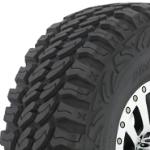 |
| Pro Comp Xtreme MT2 |
| 33x12.50x15 |
|
|

|
| Dick Cepek Mud Country |
| 33x12.50x15 |
|
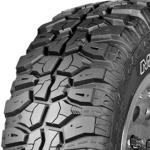 |
|
Vanderbilt Mudclaw M/T
|
|
33x12.50x15
|
|
|

|
|
Hancook Dynapro MT
|
|
33x12.50x15
|
|
|
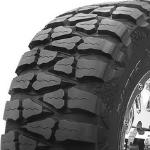
|
|
Nitto Mud Grappler
|
|
33x13.50x15
|
|
|
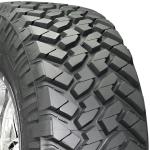
|
|
Nitto Trail Grappler M/T
|
|
33x12.50x15
|
|
|
Construction |
Radial |
Radial
|
Radial |
Radial |
Radial |
Radial |
|
Overall
Diameter (in) |
32.6 |
32.8
|
32.51 |
32.8 |
33.07 |
33.03 |
|
Overall
Width (in) |
12.5 |
12.1
|
12.5 |
12.2 |
13.94 |
12.99 |
|
Tread
Width |
N/A |
N/A
|
N/A |
9.8 |
N/A |
N/A |
|
Approved Rim Width
(in) |
N/A |
8.5 - 11.0
|
10 |
8.5 -
11.0 |
8.5 -
11.0 |
8.5 -
11.0 |
|
Tread
Depth (_/32nds) |
20 |
20.5
|
19 |
18.5 |
21 |
21 |
|
Tire
Weight (lbs) |
N/A |
56
|
52 |
N/A |
N/A |
N/A |
|
Warranty |
40,000 Mile Tread Wear Warranty |
Prorated Replacement
|
Undefined |
50,000 /
Prorated |
60 Months
/ 1st 25% Worn |
60 Months
/ 1st 25% Worn |
|
Price Range (03/2014) |
$250 |
$215 - $232
|
$180 -
$213 |
$209 -
$226 |
$272 -
$282 |
$247 -
$261 |
|
Price
- Online Dealer |
Discounttire.com |
TireRack.com
|
NTB.com |
Onlinetires.com |
NTB.com |
NTB.com |
|
Rating - Online Dealer |
N/A |
N/A
|
N/A |
N/A |
N/A |
N/A |
|
Price - Amazon |
Check Price
|
Check Price
|
Check Price
|
Check Price
|
Check Price
|
Check Price
|
|
Reviews - Amazon |
N/A |
N/A
|
N/A |
N/A |
N/A |
N/A |
|
Rating - Amazon |
N/A
|
N/A
|
N/A |
N/A |
N/A |
N/A |
|
Price - 4Wheelparts |
Check
Price
|
Check
Price
|
N/A |
N/A |
Check
Price |
Check
Price |
|
Reviews - 4Wheelparts |
Read
Reviews
|
Read
Reviews
|
N/A |
N/A |
N/A |
Read
Reviews |
|
Rating - 4Wheelparts |

|

|
N/A |
N/A |
N/A |
 |
|
Manufacturer Link |
Pro
Comp
|
Dick
Cepek
|
Vanderbilt |
Hancook |
Nitto |
Nitto |
|
|
|
33"
Mud Terrains
|
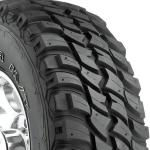 |
| Hercules Trail Digger Mud
Terrain |
| 33x12.50x15 |
|
 |
|
Toyo Open Country Mud
Terrain |
| 33x12.50x15 |
|
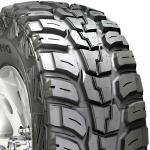 |
| Kumho Road Venture Mud
Terrain |
| 33x12.50x15 |
|
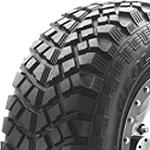 |
| Yokohama Geoloander
M/T |
| 33x12.50x15 |
|
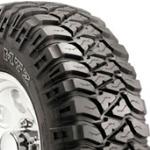 |
|
Mickey Thompson Baja MTZ
|
|
33x12.50x15
|
|
|
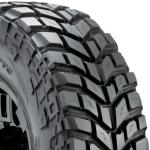
|
|
Mickey Thompson Baja Claw TTC
|
|
33x12.50x15
|
|
|
Construction |
Radial
|
Radial
|
Radial |
Radial |
Radial |
Radial |
|
Overall
Diameter (in) |
32.5
|
33
|
32.3 |
32.6 |
32.8 |
32.7 |
|
Overall
Width (in) |
12.8
|
12.8
|
12.5 |
12.6 |
12.1 |
12.1 |
|
Tread
Width |
N/A
|
N/A
|
N/A |
10.4 |
9.7 |
9.7 |
|
Approved Rim Width
(in) |
10.0
|
8.0 - 11.0
|
8.5 -
11.0 |
8.5 -
11.0 |
8.5 - 11.0 |
8.5 -
11.0 |
|
Tread
Depth (_/32nds) |
20.5
|
21
|
19 |
19 |
20.5 |
20.5 |
|
Tire
Weight (lbs) |
52
|
69
|
53.7 |
51.8 |
56 |
60 |
|
Warranty |
2-Years / Prorated
|
1-Year / First 25%
|
5-Year /
Prorate |
5-Year |
Prorated |
Prorated |
|
Price Range (03/2014) |
$194
|
$269 - $304
|
$182 -
$228 |
$208 |
$205 -
$230 |
$210 -
$235 |
|
Price
- Online Dealer |
N/A
|
Simpletire.com
|
TireRack.com |
TireRack.com |
SummitRacing.com |
SummitRacing.com |
|
Rating - Online Dealer |
N/A
|

|
 |
 |
N/A |
N/A |
|
Price - Amazon |
Check Price
|
Check Price
|
Check Price
|
N/A |
Check Price
|
Check Price
|
|
Reviews - Amazon |
Read Reviews
|
N/A
|
N/A |
N/A |
Read Reviews |
Read Reviews |
|
Rating - Amazon |

|
N/A
|
N/A |
N/A |

|

|
|
Price - 4Wheelparts |
N/A
|
Check
Price
|
N/A |
N/A |
Check
Price
|
N/A
|
|
Reviews - 4Wheelparts |
N/A
|
Read
Reviews
|
N/A |
N/A |
Read
Reviews
|
N/A
|
|
Rating - 4Wheelparts |
N/A
|

|
N/A |
N/A |

|
N/A
|
|
Manufacturer Link |
Hercules
|
Toyo
|
Kumho |
Yokohama |
Mickey Thompson |
Mickey
Thompson |
|
|
|
33"
Mud Terrains
|
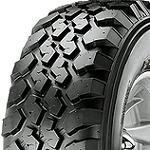 |
| Maxxis Buckshot |
| 33x12.50x15 |
|
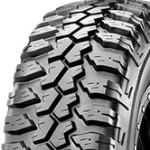 |
| Maxxis Big Horn |
| 33x12.50x15 |
|
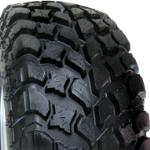 |
| Pit Bull Growler |
| 33x12.50x15 |
|
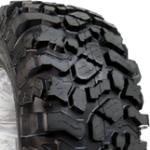 |
| Pitbull Rocker |
| 33x13.50x15 |
|
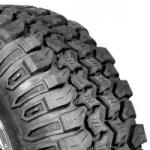 |
| Super Swamper
TrXus MT |
| 33x12.50x15 |
|
|

|
|
Super Swamper LTB |
|
33x13.50x15 |
|
|
Construction |
Radial
|
Radial
|
Bias |
Bias |
Radial |
Bias |
|
Overall
Diameter (in) |
32.2
|
32.9
|
32.8 |
33 |
33 |
32.8 |
|
Overall
Width (in) |
12.7
|
12.7
|
12.9 |
13.7 |
12.7 |
13.0 |
|
Tread
Width |
N/A
|
N/A
|
10.25 |
10.9 |
9.6 |
11.3 |
|
Approved Rim Width
(in) |
10
|
10
|
10 |
11 |
8.5 - 10.0 |
10 |
|
Tread
Depth (_/32nds) |
20
|
21
|
22 |
22 |
19 |
22 |
|
Tire
Weight (lbs) |
N/A
|
N/A
|
56 |
57 |
67 |
60 |
|
Warranty |
6-Year
|
6-Year
|
5-Year |
5-Year |
Unspecified |
Unspecified
|
|
Price Range (03/2014) |
$155
|
$232 - $252
|
$279 |
$308 |
$276 -
$294 |
$254 -
$268 |
|
Price
- Online Dealer |
Onlinetires.com
Price
|
Onlinetires.com
|
ok4wd.com
Price |
ok4wd.com
Price |
SummitRacing.com |
SummitRacing.com |
|
Rating - Online Dealer |
N/A
|
N/A
|
N/A |
N/A |
N/A |
N/A |
|
Price - Amazon |
N/A
|
Check Price
|
N/A |
N/A |
Check Price
|
Check Price
|
|
Reviews - Amazon |
N/A
|
N/A
|
N/A |
N/A |
N/A |
N/A |
|
Rating - Amazon |
N/A
|
N/A
|
N/A |
N/A |
N/A |
N/A |
|
Price - 4Wheelparts |
N/A
|
Check
Price
|
N/A |
N/A |
Check
Price |
Check
Price |
|
Reviews - 4Wheelparts |
N/A
|
N/A
|
N/A |
N/A |
Read
Reviews |
Read
Reviews |
|
Rating - 4Wheelparts |
N/A
|
N/A
|
N/A |
N/A |
 |
 |
|
Manufacturer Link |
Maxxis
|
Maxxis
|
Pit
Bull |
Pit
Bull |
Interco |
Interco |
|
|
|
33"
Mud Terrains
|
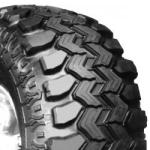 |
| Super Swamper
SSR |
| 33x12.50x15 |
|
|

|
|
Super Swamper TSL (Radial)
|
|
33x12.50x15
|
|
|

|
|
Super Swamper TSL (Bias)
|
|
33x12.50x15
|
|
|

|
|
Super Swamper TSL SX
|
|
33x15.50x15
|
|
|
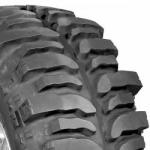
|
|
Super Swamper Bogger
|
|
33x12.50x15
|
|
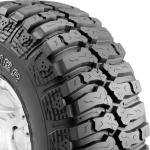 |
| Dick Cepek
Crusher |
| 33x12.50x15 |
|
|
Construction |
Radial
|
Radial
|
Bias |
Bias |
Bias |
Radial |
|
Overall
Diameter (in) |
33.4
|
32.7
|
33.7 |
33.1 |
33.2 |
32.8 |
|
Overall
Width (in) |
12.5
|
12.7
|
12.4 |
15.2 |
12.8 |
12.1 |
|
Tread
Width |
10.6
|
9.4
|
10.2 |
12.3 |
11.1 |
9.7 |
|
Approved Rim Width
(in) |
8.5 - 10.0
|
10
|
10 |
10 - 12 |
10 |
8.5 -
11.0 |
|
Tread
Depth (_/32nds) |
21
|
21
|
24 |
23 |
23 |
20.5 |
|
Tire
Weight (lbs) |
66
|
60
|
62 |
67 |
64 |
56 |
|
Warranty |
Unspecified
|
Unspecified
|
Unspecified |
Unspecified |
Unspecified |
Prorated Replacement
|
|
Price Range (03/2014) |
$355 - $372
|
$274 - $309
|
$253 -
$269 |
$336 -
$360 |
$332 -
$335 |
$220 -
$236 |
|
Price
- Online Dealer |
SummitRacing.com
|
SummitRacing.com
|
SummitRacing.com |
SummitRacing.com |
SummitRacing.com |
TireRack.com
|
|
Rating - Online Dealer |
N/A
|
N/A
|
N/A |
N/A |
N/A |
N/A |
|
Price - Amazon |
N/A
|
Check Price
|
Check Price
|
Check Price
|
Check Price
|
Check Price
|
|
Reviews - Amazon |
N/A
|
N/A
|
N/A |
N/A |
N/A |
Read Reviews |
|
Rating - Amazon |
N/A
|
N/A
|
N/A |
N/A |
N/A |
 |
|
Price - 4Wheelparts |
Check
Price
|
Check
Price
|
Check
Price |
Check
Price |
Check
Price |
Check
Price |
|
Reviews - 4Wheelparts |
N/A
|
Read
Reviews
|
Read
Reviews |
N/A |
Read
Reviews |
Read
Reviews |
|
Rating - 4Wheelparts |
N/A
|

|
 |
N/A |
 |

|
|
Manufacturer Link |
Interco
|
Interco
|
Interco |
Interco
|
Interco |
Dick
Cepek |
Shopping
Online & Warranties:
Some
people feel that they need to go to their local tire shop to buy tires.
Sometimes that can limit your options. Some tire shops won't have the
size you want when you walk in, and will have to order it.
Companies
such as Tire Rack have agreements with local tire shops to install tires.
When you buy the tires online, they send them to your local tire shop for
installation. Other companies will charge a flat rate for shipping, or may
offer free shipping. have agreements with local tire shops to install tires.
When you buy the tires online, they send them to your local tire shop for
installation. Other companies will charge a flat rate for shipping, or may
offer free shipping.
Amazon and
Discount Tire and
Discount Tire usually have tires that ship for free.
usually have tires that ship for free.
Some
people have concerns about their warranty when they order tires online. If
your tire has a manufactures warranty, any dealer that carries that brand
will be able to honor it. Any tire shop will mount tires that you
bring in. Having a shop mount your tires doesn't usually cost that much.
In
this day in age, you have to be an educated consumer and get the best
deal. Even if it means getting tires online with free shipping, or having
them sent to a local tire shop.
Our
Recommendations From The Chart:
Under
$200:
There
are very few 33-inch tires anymore under $200.
The
Maxxis Buckshot Mudder - Is probably one of the oldest mud terrains on the
market. It's a quality tire, and the cheapest name brand 33-inch mud
terrain you can currently find. It has a 20/32 inch deep tread.
The
Mastercraft Courser MXT - Is another great value under $200, and measures
32.83 inches with a 20/32 inch deep tread. Much closer to the true 33-inch diameter.
The
Dunlop Mud Rover would also be in the top (3) picks for mud terrains under
$200. It's 32.5 inches in diameter with a 20/32 inch tread depth.
Above
$200:
The
Goodyear Wrangler MTR is 32.8 inches with 21/32 inches of mud tread. It
also has sidewalls reinforced with Kevlar.
The
Firestone Destination with it's diameter listed at 33 inches and a deep
22/32 inch tread depth.
The
BFGoodrich Mud Terrain KM2, a proven winner in various off-road
motorsports.
What's
The Ultimate Mud Terrain:
Really,
anything made by Interco (Super Swamper). The Super Swamper bogger is
hands down the best mud tire. It's not that great on rocks, and not a
tire you want to drive on the street. Super Swamper TSL's would be the
best tires for a dedicated trail rig, and a setup consisting of Super
Swamper TSL's on the front, with Super Swamper Boggers on the back, is an
amazing mud setup.
The
Super Swamper TSL and SSR radials would be a great tire for a trail rig
that sees a lot of pavement driving.
Links:
Tire
Rack - 33x12.50x15 Mud Terrains
Discount
Tire - 33x12.50x15 Mud Terrains


|